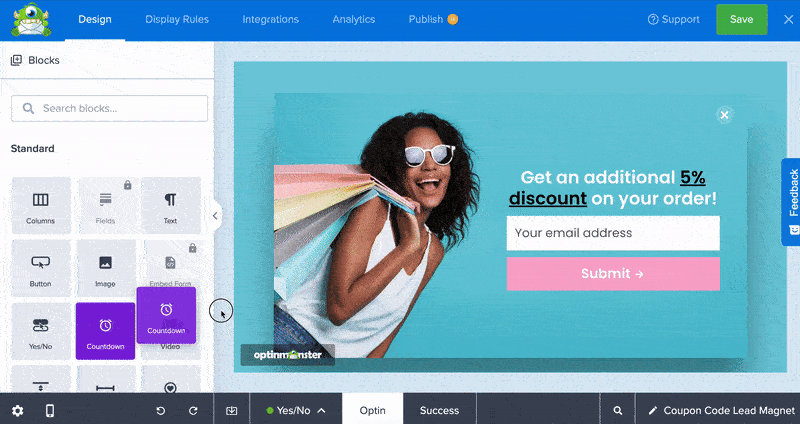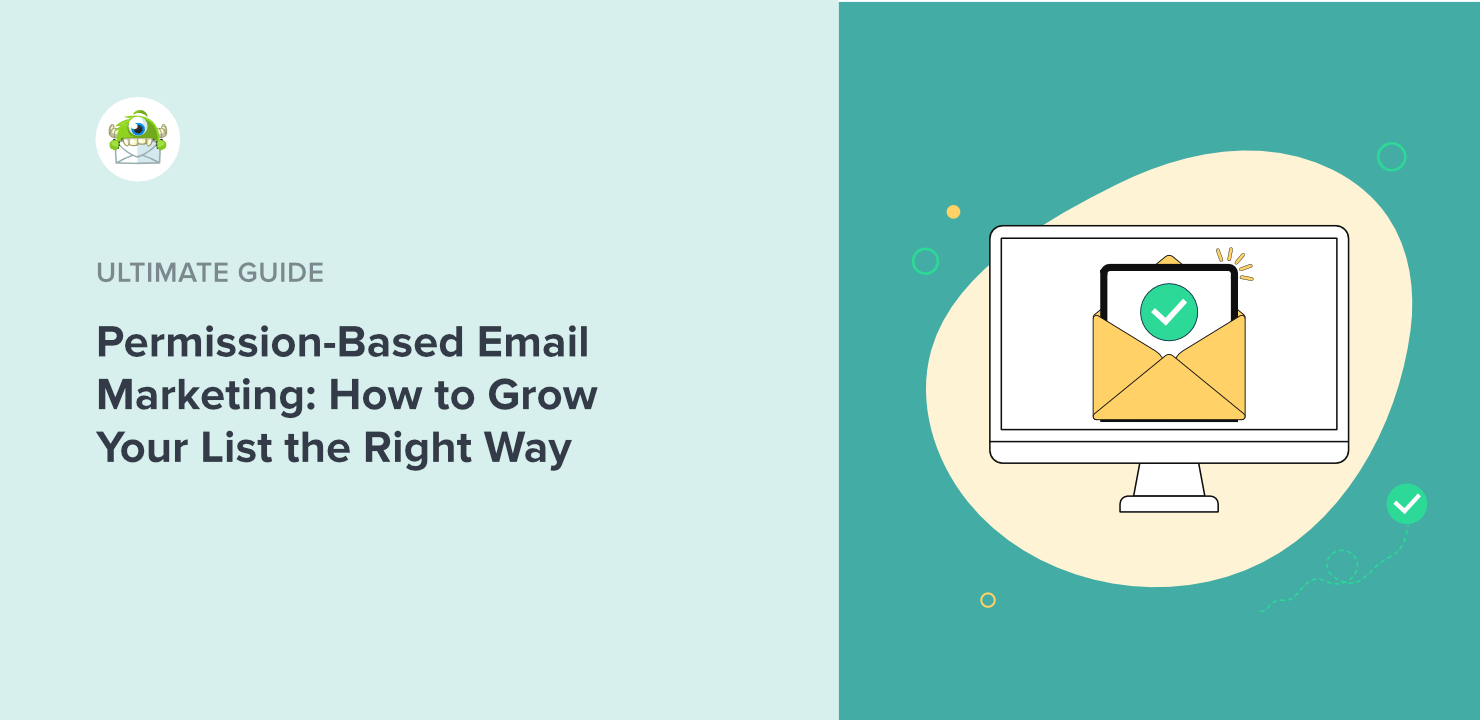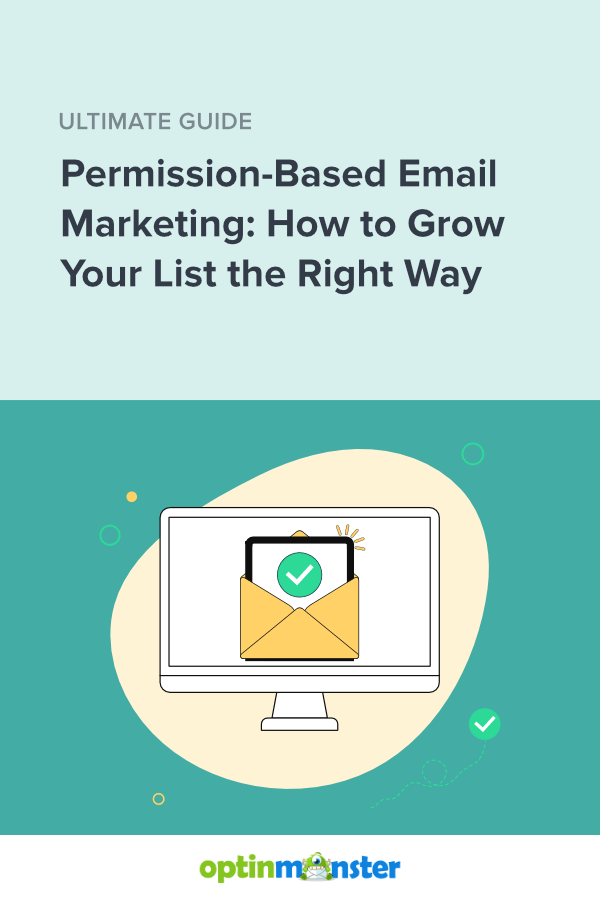Email marketing is one of the most effective ways to grow a business, but only if you do it legally. Sending emails without permission can land you in spam folders, hurt your reputation, and even get you fined. That’s why permission-based email marketing is essential.
I’ve managed email marketing for several organizations, and I’ve done thorough research to make sure I always follow the laws and best practices for email permissions. And here at OptinMonster, we’ve helped over 1.2 million websites grow their email marketing the right way, using strategies that increase sign-ups while staying on the right side of the law.
In this guide, I’ll show you exactly what permission-based email marketing is, why it matters, and how to grow your email list without breaking the rules. You’ll also learn how OptinMonster’s tools make compliance easier while maximizing conversions.
This post does not constitute legal advice. Contact your legal team to make sure your email marketing is fully compliant with all relevant laws.
- What Is Permission-Based Email Marketing?
- Why It Matters: Benefits & Risks
- The 2 Types of Permission (Explicit vs. Implied)
- Legal Requirements: GDPR, CAN-SPAM, and CASL
- Best Practices for Permission-Based Email Marketing
- How to Get Permission Without Losing Leads
What Is Permission-Based Email Marketing?
Permission-based email marketing means sending emails only to people who have explicitly agreed to receive them. This is also called opt-in email marketing because the recipient opts in before getting your messages.
Examples of Permission-Based Emails
- A visitor fills out a signup form on your website and checks a box agreeing to receive emails.
- A customer subscribes to your newsletter in exchange for a free ebook or discount code.
- A new user creates an account and agrees to receive email updates.
- A customer in your brick-and-mortar store gives you their information to receive marketing emails from you.
What’s NOT Permission-Based Email Marketing?
- Buying an email list and sending emails to people who never opted in.
- Automatically adding people to your list just because they made a purchase.
- Scraping email addresses from websites or social media and sending unsolicited messages.
Sending emails without permission doesn’t just annoy people. It violates major email marketing laws and can lead to serious penalties.
Why Permission-Based Email Marketing Matters
You might be wondering: Do I really need to get permission before sending emails?
Yes! Getting permission isn’t just about following the law. It’s also a smart business move.
1. Higher Open Rates and Click-Through Rates
When someone chooses to receive your emails, they’re more likely to open, read, and engage with them. Unsolicited emails usually get ignored or marked as spam.
2. Better Email Deliverability
Email providers (like Gmail and Yahoo) track how recipients interact with your emails. If too many people ignore or mark your emails as spam, your future emails may not reach inboxes at all.
3. Legal Protection (Avoid Fines!)
There are strict laws against sending emails without permission.
- GDPR (Europe): Requires explicit consent before sending marketing emails. Fines can reach €20 million!
- CAN-SPAM (USA): Allows unsolicited emails but requires an easy opt-out. Fines can go up to $46,517 per violation.
- CASL (Canada): Requires opt-in consent for marketing emails.
Following permission-based email marketing keeps your business safe from costly legal trouble.
4. Stronger Customer Trust and Loyalty
When people trust your brand, they’re more likely to stay subscribed, open your emails, and eventually become paying customers.
The 2 Types of Email Permission
Not all email permission is the same. There are 2 types: explicit permission and implied permission.
1. Explicit Permission (Best Practice)
Explicit permission means that a person actively agrees to receive your emails. This is the gold standard for email marketing because it ensures full compliance with privacy laws and leads to better engagement.
Examples of explicit permission:
- A visitor signs up for your newsletter and checks a box saying, “Yes, I want to receive marketing emails.”
- A user enters their email to get a free guide and agrees to receive updates.
- A customer subscribes to a membership program and consents to marketing emails during sign-up.
Why it’s the best approach:
- It ensures legal compliance under GDPR, CASL, and other regulations.
- It reduces spam complaints and improves email deliverability.
- It creates higher-quality leads who actually want your emails.
2. Implied Permission (Risky and Limited)
Implied permission means that someone hasn’t explicitly agreed to receive emails, but their actions suggest they might be open to it.
Examples of implied permission:
- A customer buys a product from your store, and you automatically add them to your marketing list.
- A user contacts your support team, and you later send them promotional emails.
- A business card is exchanged at an event, and one party starts sending emails without clear consent.
Many businesses assume that implied permission is good enough. However, this is risky because:
- GDPR does not recognize implied consent. You must get explicit permission.
- CASL (Canada) allows implied consent but only for a limited time (for example, within 2 years of a purchase).
- People are more likely to ignore or mark these emails as spam.
To stay compliant and build a stronger email list, always aim for explicit permission.
Legal Requirements: GDPR, CAN-SPAM, and CASL
Email marketing laws exist to protect consumers from spam and privacy violations. Here’s what you need to know about the three biggest regulations:
1. GDPR (General Data Protection Regulation – Europe)
GDPR is the strictest email marketing law and applies to any business that collects data from people in the European Union (EU), even if your business isn’t based there.
Key GDPR rules:
- Requires explicit consent before sending marketing emails.
- No pre-checked boxes allowed. Users must actively opt in.
- Right to be forgotten: Users must be able to easily unsubscribe and have their data deleted.
- Fines: Up to €20 million or 4% of annual revenue, whichever is higher.
How to comply:
- Use clear opt-in forms with explicit consent checkboxes.
- Allow users to easily unsubscribe at any time.
- Store proof of consent in case of audits.
Make Sure Your Email Sign-Up Forms Follow GDPR
Get step-by-step guidance here: How to Create GDPR-Compliant Popups: Tips for Privacy and Trust
2. CAN-SPAM Act (USA)
CAN-SPAM is less strict than GDPR. It allows sending emails without prior consent, but you must follow certain rules.
Key CAN-SPAM rules:
- You must identify yourself clearly (no misleading subject lines).
- You must provide an opt-out option in every email.
- You must honor opt-out requests quickly (within 10 days).
- Fines: Up to $46,517 per violation.
How to comply:
- Always include an unsubscribe link in every email.
- Be honest about who you are and what your emails contain.
3. CASL (Canada’s Anti-Spam Law)
CASL is stricter than CAN-SPAM but more flexible than GDPR.
Key CASL rules:
- Requires opt-in consent (explicit or implied).
- Implied consent expires after 2 years unless the user renews it.
- Fines: Up to $10 million per violation.
How to comply:
- Get explicit consent whenever possible.
- Keep records of consent for legal protection.
Of course, more countries have their own rules about email marketing. Be sure to research your country’s rules.
Best Practices for Permission-Based Email Marketing
Once you have permission to send emails, the next step is to build a high-quality list while keeping engagement high. Here are some best practices to follow.
1. Use a Double Opt-In
A double opt-in requires users to confirm their email subscription through a follow-up email before they’re added to your list.
Why it helps:
- Ensures that people actually want to receive your emails.
- Reduces fake signups and spam complaints.
- Improves email deliverability and engagement.
Most email marketing platforms let you enable double opt-in with a simple setting. Then, everyone who signs up for your list will automatically receive a confirmation email like this one:

Learn Why and How to Use Double Opt-Ins
Check out our complete guide to double opt-ins.
2. Be Transparent About Data Use
People want to know how their information will be used. When collecting emails, include a short, clear message explaining what users are signing up for.
For example, your sign-up form could say something like:
“Sign up for our weekly email to get exclusive discounts and helpful marketing tips. You can unsubscribe anytime.”
Adding a link to your privacy policy can also build trust.
3. Let Users Manage Preferences
Some people unsubscribe because they feel overwhelmed by emails. Instead of giving them an all-or-nothing option, let them adjust their preferences.
For example, offer options like:
- Weekly updates
- Monthly newsletters only
- Only major announcements
This approach helps retain subscribers who might otherwise leave completely.
4. Keep Your List Clean
Inactive subscribers can hurt your email performance. Regularly remove or re-engage people who haven’t opened your emails in months.
How to do this:
- Send a re-engagement email offering a discount or asking if they still want to hear from you.
- Remove email addresses that bounce repeatedly.
- Automatically unsubscribe users who haven’t engaged in a year.
A cleaner list means better deliverability and higher engagement. For in-depth details, see our guide to email list cleaning.
5. Make Unsubscribing Easy
Hiding the unsubscribe button only frustrates users and increases spam complaints. Every email should include a clear, one-click unsubscribe link. Even if someone leaves, a smooth experience keeps your brand reputation intact. But more importantly, an easy unsubscribe link is legally required.
Here’s the unsubscribe link we use at the bottom of our marketing emails here at OptinMonster.

How to Get Permission Without Losing Leads with OptinMonster
Many businesses worry that adding extra consent steps will reduce their sign-ups. But with the right strategies, you can stay compliant while still growing your email list quickly.
With OptinMonster, you don’t have to worry. It’s the best tool available for building your list for your permission-based email marketing. OptinMonster helps businesses create high-converting email sign-up forms while ensuring compliance with GDPR, CAN-SPAM, and CASL.

Here’s how you can use OptinMonster to get permission the right way, without losing potential leads.
1. Offer a Lead Magnet
A lead magnet is a free incentive that encourages visitors to subscribe. The best-performing lead magnets include:
- Discount codes (“Get 10% off when you join our email list”)
- Free guides (“Download our ultimate email marketing checklist”)
- Exclusive access (“Be the first to know about new products and sales”)
How to offer lead magnets with OptinMonster:
- Select from 700+ templates designed for collecting email addresses.
- Use OptinMonster’s drag-and-drop builder to customize the template in just a few minutes.
- Set up an automatic lead magnet delivery via email or redirect users to a download page.
Here’s just one of OptinMonster’s multiple templates that are already designed to offer a lead magnet:

You can also easily add a explicit consent checkbox to any OptinMonster campaign:

2. Optimize Your Opt-In Forms
No matter which of OptinMonster’s templates you choose, you can easily make it fit your brand and goals with the drag-and-drop visual builder:

The way you design and place your opt-in forms affects how many people sign up. OptinMonster lets you:
- Use eye-catching popups, floating bars, and inline forms to capture attention.
- Add elements like countdown timers to drive urgency.
- Run A/B tests to see which form variations convert best.
- Customize forms to match your brand and message.
3. Use Exit-Intent® Popups
Many visitors leave a website before signing up. Exit-Intent® popups detect when someone is about to leave and display a targeted message to encourage them to subscribe.
How to create exit popups with OptinMonster:
- Enable Exit-Intent® Technology to recover abandoning visitors.
- Personalize the message based on user behavior.
- Offer a lead magnet or a last-minute discount before they go.
It only takes a few clicks to set up an exit trigger on any campaign in OptinMonster’s Display Rules:

4. Use Geo-Location Targeting for Compliance
Different countries have different email marketing laws. OptinMonster’s Geo-Location Targeting helps you make sure your email signup forms follow the right rules based on a visitor’s location.
How to use OptinMonster’s Geo-Location Targeting:
- Show GDPR-compliant opt-in forms only to visitors from the EU.
- Use simpler opt-ins for users in the US and Canada, where regulations are more flexible.
- Set up region-based messaging to ensure compliance without losing sign-ups.
Setting up GDPR-specific campaigns is easier than you think with OptinMonster. The Display Rules let you specifically target visitors based on whether they are or aren’t in the EU:

Build a High-Converting, Permission-Based Email List Today
Permission-based email marketing isn’t just about following the law. It’s the smartest way to build a high-quality, engaged email list that actually converts. By getting explicit permission, you’ll see higher open rates, better deliverability, and stronger customer trust.
But getting permission doesn’t have to slow down your growth. With the right tools, you can increase sign-ups while staying compliant.
That’s why businesses use OptinMonster to:
- Create high-converting opt-in forms that encourage users to subscribe.
- Use geo-location targeting to automatically adjust forms for GDPR compliance.
- Display Exit-Intent® popups to capture leads before they leave.
- Run A/B tests to find the best-performing sign-up forms.
If you’re ready to grow your email list the right way, sign up for OptinMonster, risk-free with our 14-day money-back guarantee.
BONUS: Done-For-You Campaign Setup ($297 value)
Our conversion experts will design 1 free campaign for you to get maximum results – absolutely FREE!
Related Resources:











Add a Comment